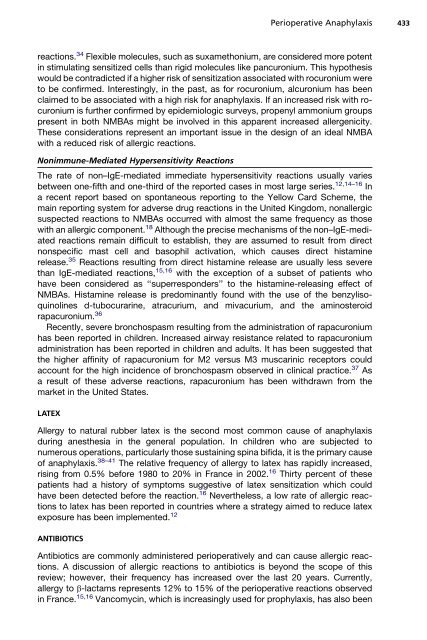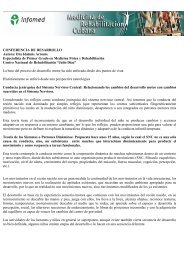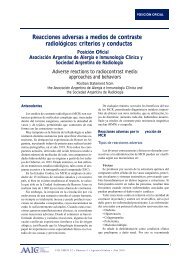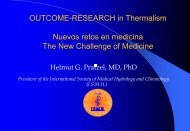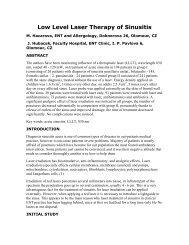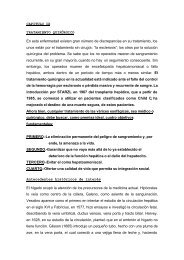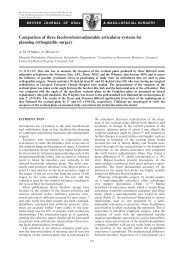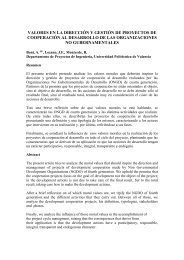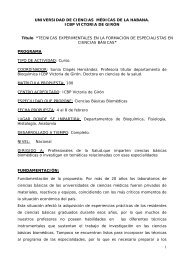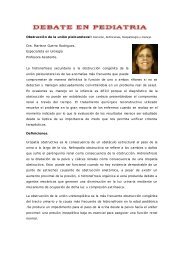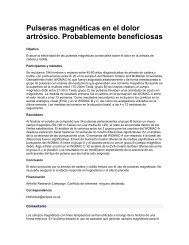Perioperative Anaphylaxis
Perioperative Anaphylaxis
Perioperative Anaphylaxis
You also want an ePaper? Increase the reach of your titles
YUMPU automatically turns print PDFs into web optimized ePapers that Google loves.
<strong>Perioperative</strong> <strong>Anaphylaxis</strong> 433<br />
reactions. 34 Flexible molecules, such as suxamethonium, are considered more potent<br />
in stimulating sensitized cells than rigid molecules like pancuronium. This hypothesis<br />
would be contradicted if a higher risk of sensitization associated with rocuronium were<br />
to be confirmed. Interestingly, in the past, as for rocuronium, alcuronium has been<br />
claimed to be associated with a high risk for anaphylaxis. If an increased risk with rocuronium<br />
is further confirmed by epidemiologic surveys, propenyl ammonium groups<br />
present in both NMBAs might be involved in this apparent increased allergenicity.<br />
These considerations represent an important issue in the design of an ideal NMBA<br />
with a reduced risk of allergic reactions.<br />
Nonimmune-Mediated Hypersensitivity Reactions<br />
The rate of non–IgE-mediated immediate hypersensitivity reactions usually varies<br />
between one-fifth and one-third of the reported cases in most large series. 12,14–16 In<br />
a recent report based on spontaneous reporting to the Yellow Card Scheme, the<br />
main reporting system for adverse drug reactions in the United Kingdom, nonallergic<br />
suspected reactions to NMBAs occurred with almost the same frequency as those<br />
with an allergic component. 18 Although the precise mechanisms of the non–IgE-mediated<br />
reactions remain difficult to establish, they are assumed to result from direct<br />
nonspecific mast cell and basophil activation, which causes direct histamine<br />
release. 35 Reactions resulting from direct histamine release are usually less severe<br />
than IgE-mediated reactions, 15,16 with the exception of a subset of patients who<br />
have been considered as ‘‘superresponders’’ to the histamine-releasing effect of<br />
NMBAs. Histamine release is predominantly found with the use of the benzylisoquinolines<br />
d-tubocurarine, atracurium, and mivacurium, and the aminosteroid<br />
rapacuronium. 36<br />
Recently, severe bronchospasm resulting from the administration of rapacuronium<br />
has been reported in children. Increased airway resistance related to rapacuronium<br />
administration has been reported in children and adults. It has been suggested that<br />
the higher affinity of rapacuronium for M2 versus M3 muscarinic receptors could<br />
account for the high incidence of bronchospasm observed in clinical practice. 37 As<br />
a result of these adverse reactions, rapacuronium has been withdrawn from the<br />
market in the United States.<br />
LATEX<br />
Allergy to natural rubber latex is the second most common cause of anaphylaxis<br />
during anesthesia in the general population. In children who are subjected to<br />
numerous operations, particularly those sustaining spina bifida, it is the primary cause<br />
of anaphylaxis. 38–41 The relative frequency of allergy to latex has rapidly increased,<br />
rising from 0.5% before 1980 to 20% in France in 2002. 16 Thirty percent of these<br />
patients had a history of symptoms suggestive of latex sensitization which could<br />
have been detected before the reaction. 16 Nevertheless, a low rate of allergic reactions<br />
to latex has been reported in countries where a strategy aimed to reduce latex<br />
exposure has been implemented. 12<br />
ANTIBIOTICS<br />
Antibiotics are commonly administered perioperatively and can cause allergic reactions.<br />
A discussion of allergic reactions to antibiotics is beyond the scope of this<br />
review; however, their frequency has increased over the last 20 years. Currently,<br />
allergy to b-lactams represents 12% to 15% of the perioperative reactions observed<br />
in France. 15,16 Vancomycin, which is increasingly used for prophylaxis, has also been


